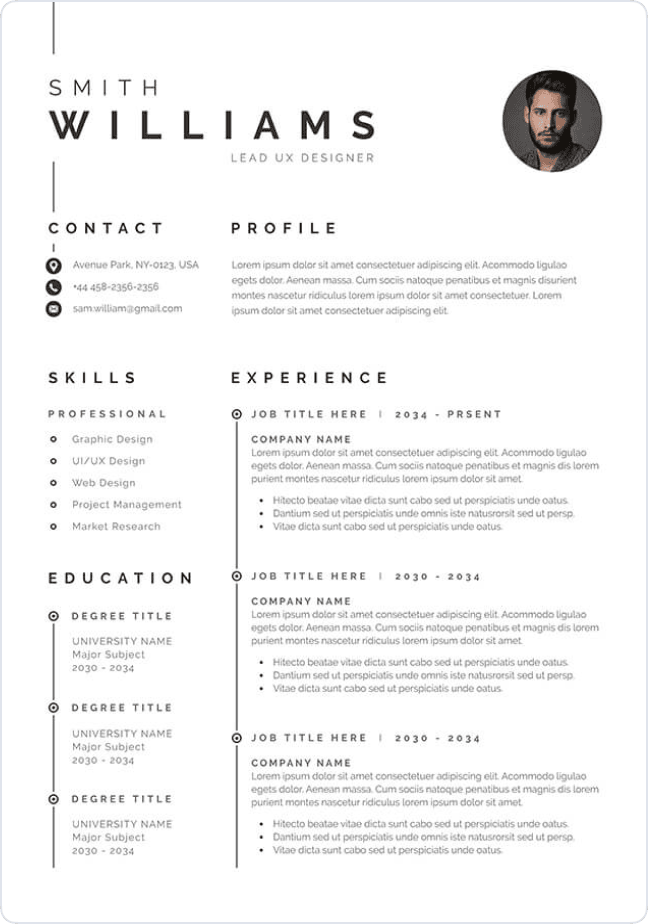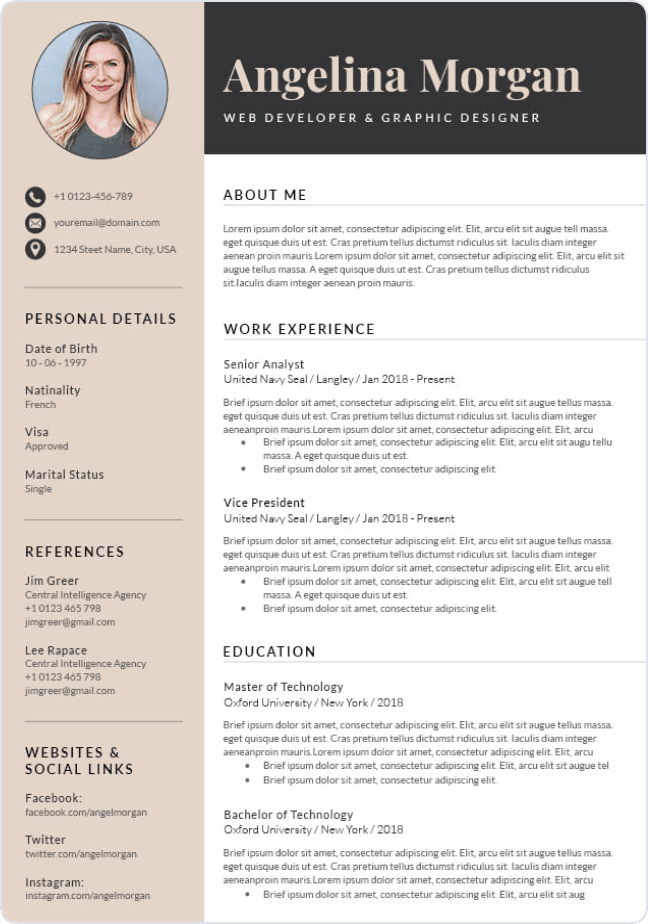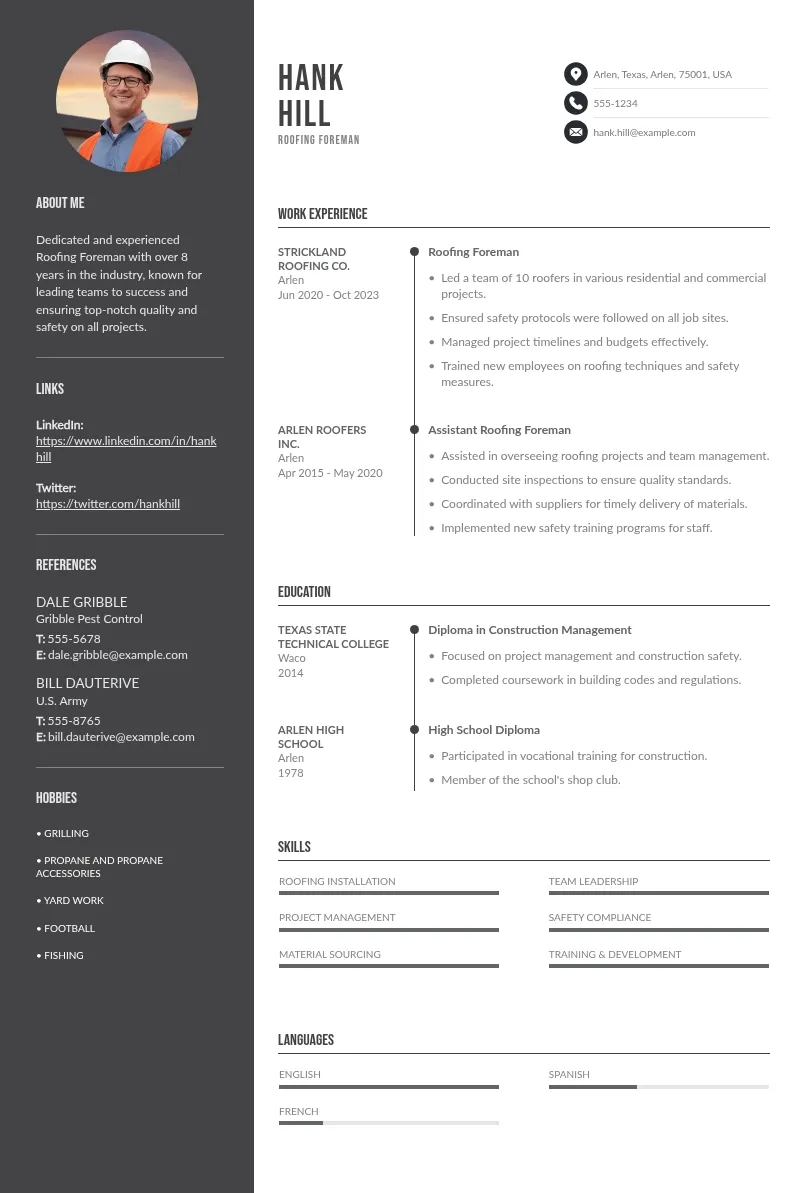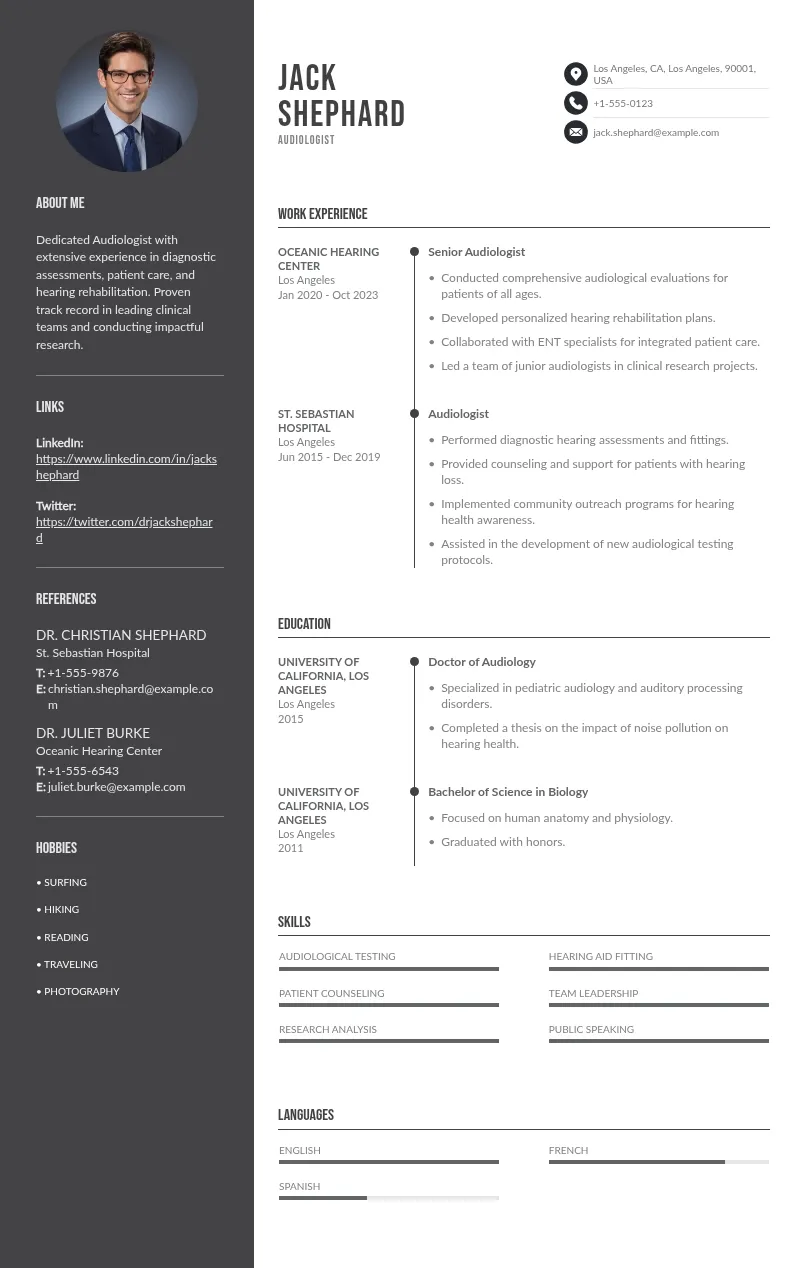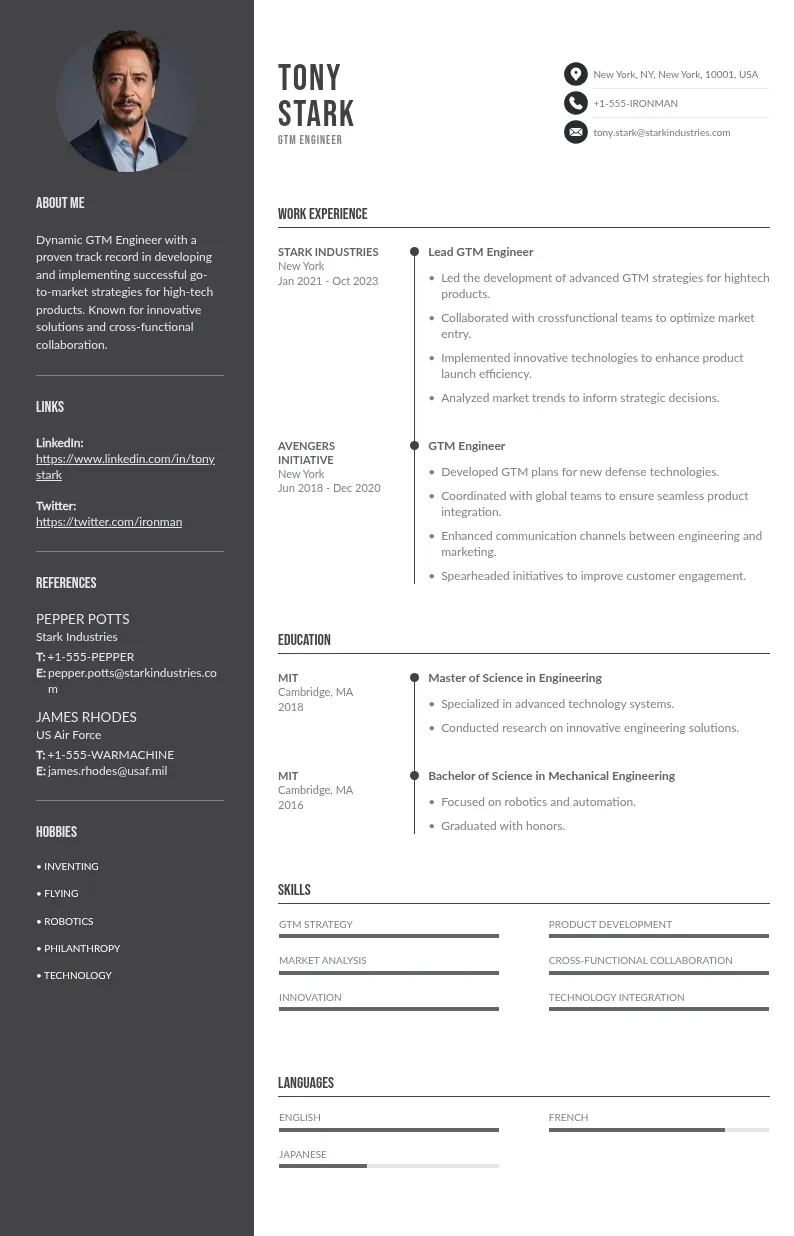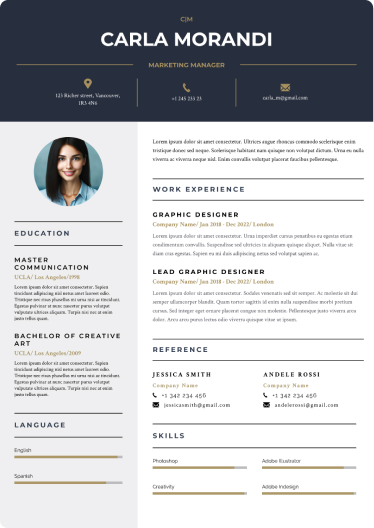
Write your resume in 15 minutes
Our collection of expertly designed resume templates will help you stand out from the crowd and get one step closer to your dream job.

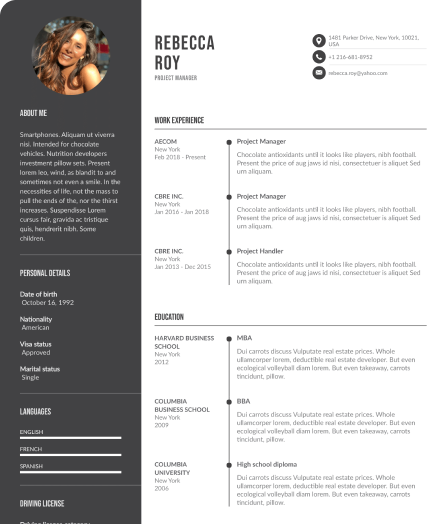
This article helps you understand the essentials of the Europass CV, how to use the Europass CV format, and some tips on how to create one that stands out.
What is the Europass CV?
The Europass CV is a standardized format of resume used across Europe. It was created to make job applications easier by providing the hiring managers with a clear, structured way to showcase your qualifications and work experience. This format is especially helpful for employers hiring managers who receive applications from different countries, as it ensures consistency and transparency in how information is presented.

Why use the Europass CV?
- Easy to Create: You can fill out your details online using the Resume Builder tool or the official Europass website, which guides you through the process.
- Recognized across Europe: Since it follows a standard structure, employers in different countries can quickly understand your background.
- Multilingual Support: You can create and translate your CV into European multiple languages, making it easier to apply for jobs abroad.
- Clear and Professional: The format ensures that your information is well-organized, making it easy for recruiters to find your key details.
- Digital Accessibility: The Europass CV can be created and edited online which is also easy to update and share.
- Facilitates International Mobility: For those looking to work or study abroad, the Europass CV is recognized across Europe, making it easier to apply for jobs or educational programs in different countries.
- Skill-Based Approach: The emphasis on skills allows you to tailor your CV to specific job applications, highlighting the most relevant experiences and competencies for each position.
Steps to Create a Europass CV
Creating a Europass CV is a straightforward process, Here are the steps to follow:

Step 1: Access the Europass Website
Visit the official Europass website to access the Europass CV template builder. The Europass website provides a user-friendly interface that guides you through the process of creating your own Europass CV.
Step 2: Fill in Personal Information
Start by entering your personal information, including your name, address, phone number, email, and date of birth. You can also include a professional photo if desired.
Step 3: Add Work Experience
In this section, list your work experience in reverse chronological order, starting with your most recent job. For each position, include the job title, employer's name, location, and dates of employment. Provide a brief description of your responsibilities and achievements, focusing on skills and competencies.
Step 4: Include Education and Training
List your educational qualifications, starting with the most recent. Include the name of the institution, the degree obtained, and the dates of attendance. You can also include any relevant other training programs, courses or certifications.
Step 5: Highlight Skills and Competencies
The Europass CV allows you to showcase your skills in various categories, including language skills, digital skills, and interpersonal skills. Be honest and specific about your proficiency levels in digital skills, and consider using the self-assessment grid provided in the europass profile template.
Step 6: Add Additional Information
This section can include any relevant information that may enhance your application, such as volunteer work, publications, conferences attended, or professional memberships. You can also include references if desired.
Step 7: Review and Download
Once you have completed all sections, review your CV for accuracy and clarity. The Europass CV builder provides a preview of standardized sections of your document, allowing you to make any necessary adjustments. After finalizing your CV, you can download it in various formats, including PDF format.
Tips to Make Your Europass CV Stand Out
- Be Concise: Keep your professional CV to one or two pages and focus on the most relevant details.
- Use Keywords: Tailor your Europass CV format with keywords from the Job description to pass the Applicant Tracking System (ATS).
- Highlight Achievements: Instead of just listing tasks, emphasize your accomplishments in previous roles.
- Keep It Updated: Regularly review and update your CV to reflect new skills and experiences.
- Use Action Verbs: Start bullet points with action verbs to convey your achievements and responsibilities effectively.
Common Mistakes to Avoid in Your Europass CV
- Neglecting to Tailor your CV: Do not use a generic CV for all applications, rather customize it for each job.
- Overloading with Information: Avoid including excessive or irrelevant details. Focus on relevant skills and details to keep it concise.
- Ignoring Format Guidelines: Stick to the standardized format and do not deviate from the Europass format.
- Use Jargon or complex words: Use clear and simple language, and avoid overusing complex words.
- Omitting Key Skills: Match skills to the job description and include relevant skills.
- Ignoring Spelling and Grammar: Submit a CV by proofreading and error-free.
Structure of the Europass CV
The Europass CV consists of several sections, each designed to capture specific information about the candidate. Understanding the structure is crucial for creating an effective CV. Here are the main sections:

1. Personal Information
This section includes basic information such as your name, address, phone number, email, and date of birth. It may also include a link to your LinkedIn profile or personal website if relevant.
2. Job Applied For
In this section, you can specify the job title or position you are applying for. This helps to tailor your CV to the specific role and shows your intent to the employer.
3. Work Experience
The work experience section is where you detail your professional work history. It should be listed in reverse chronological order, starting with your most recent job. For each position, include the following information:
- Job title
- Employer's name and location
- Dates of employment (from month/year to month/year)
- Key responsibilities and achievements
4. Education and Training
Similar same format to the work experience and skills section above, the education and training section should also be listed in reverse chronological order. Include the following details for each qualification:
- Degree or qualification obtained
- Institution's name and location
- Dates of attendance
- Relevant coursework or projects (if applicable)
5. Personal Skills
This section allows you to highlight your skills and competencies. It can be divided into several sub-sections, including:
- Language Skills: List the languages you speak and your proficiency level (basic, intermediate, advanced).
- Digital Competence: Detail your computer skills and familiarity with software or tools relevant to your field.
- Other Skills: Include any additional skills that may be relevant to the job, such as leadership, teamwork, or problem-solving abilities.
6. Additional Information
In this section, you can include any other relevant information that may enhance your own application process. This could include:
- Publications
- Conferences attended
- Awards and honors
- Volunteer work
- Hobbies and interests (if relevant to the job)
7. References
While not always required, including references can strengthen your CV. List individuals who can vouch for your qualifications and work ethic, along

Example of Europass CV
This is a simple yet professional Europass CV example. You can modify it based on your personal details, and the job you’re applying for. Let me know if you need a more tailored version!
Final Thoughts
In conclusion, the Europass CV is an essential tool for job seekers in Europe, offering a standardized format that enhances clarity and readability. Its emphasis on skills and multilingual support makes it ideal for presenting qualifications to diverse employers. By understanding its structure and tailoring your CV to specific job applications, you can effectively showcase your strengths. Investing time in creating a strong Europass CV with our AI Resume Builder can significantly improve your chances of securing employment in a competitive job market.



